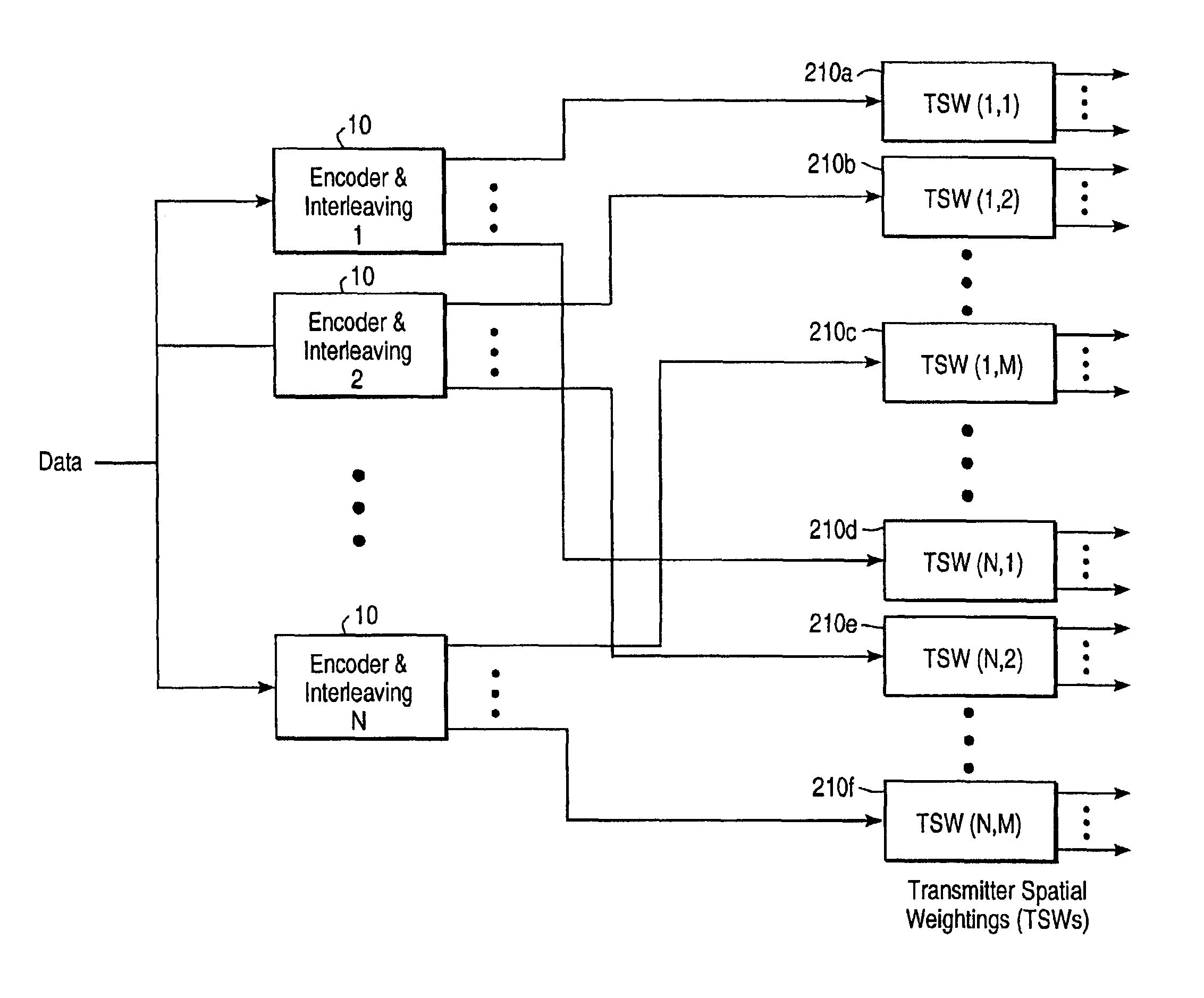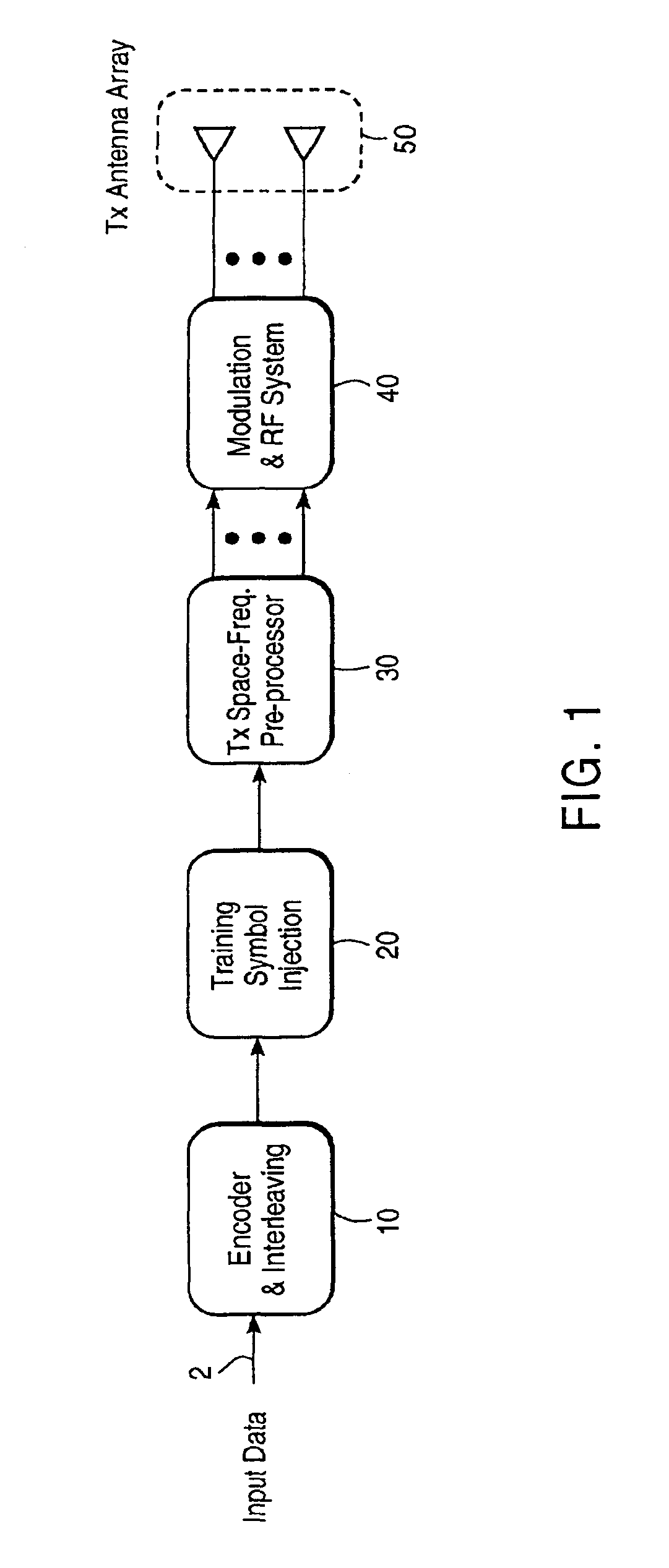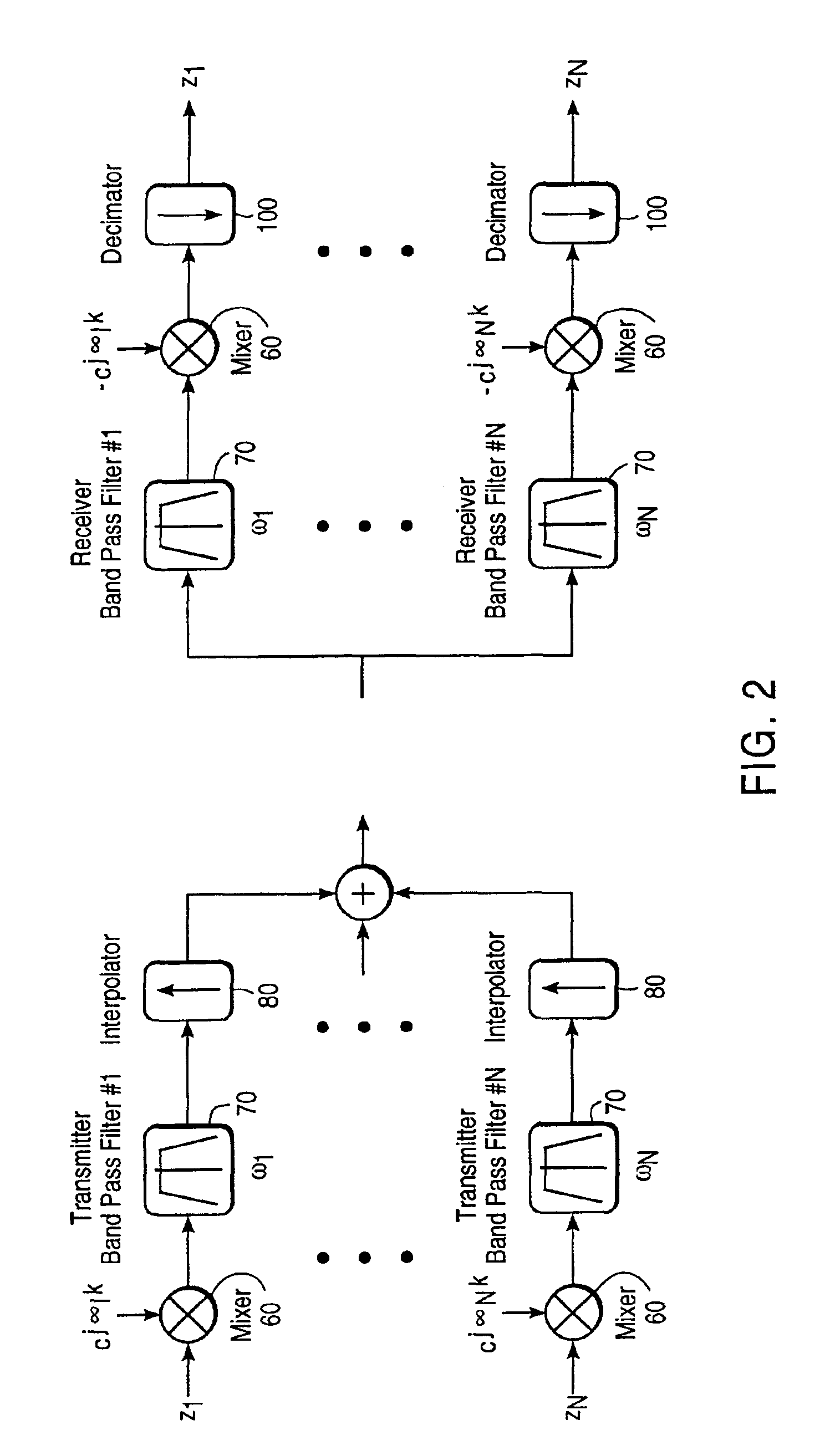Spatio-temporal processing for communication
a technology of spatial time and communication, applied in the field of digital communication, can solve the problems of high signal processing complexity, difficult communication through wireless media, communication channel which exhibits fading and delay spread, etc., and achieve the effect of reducing complexity, optimizing performance, and reducing efficiency
- Summary
- Abstract
- Description
- Claims
- Application Information
AI Technical Summary
Benefits of technology
Problems solved by technology
Method used
Image
Examples
Embodiment Construction
Definitions
[0042]A “channel” refers to the input symbol to output symbol relationship for a communication system. A “vector channel” refers to a channel with a single input and multiple outputs (SIMO), or multiple inputs and a single output (MISO). Each hj entry in the vector channel h describes one of the complex path gains present in the channel. A “matrix channel” refers to a channel with multiple inputs and multiple outputs (MIMO). Each entry Hi,j in the matrix H describes the complex path gain from input j to output i. A “space time channel” refers to the input to output relationship of a MIMO matrix channel, or a SIMO or MISO vector channel, that occurs when multipath signal propagation is present so that the channel contains delay elements that produce inter-symbol interference (ISI) as explained below.
[0043]A “spatial direction” is a one dimensional subspace within a matrix or vector communication channel. Spatial directions need not be orthogonal. A spatial direction is typ...
PUM
 Login to View More
Login to View More Abstract
Description
Claims
Application Information
 Login to View More
Login to View More - R&D
- Intellectual Property
- Life Sciences
- Materials
- Tech Scout
- Unparalleled Data Quality
- Higher Quality Content
- 60% Fewer Hallucinations
Browse by: Latest US Patents, China's latest patents, Technical Efficacy Thesaurus, Application Domain, Technology Topic, Popular Technical Reports.
© 2025 PatSnap. All rights reserved.Legal|Privacy policy|Modern Slavery Act Transparency Statement|Sitemap|About US| Contact US: help@patsnap.com



